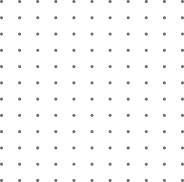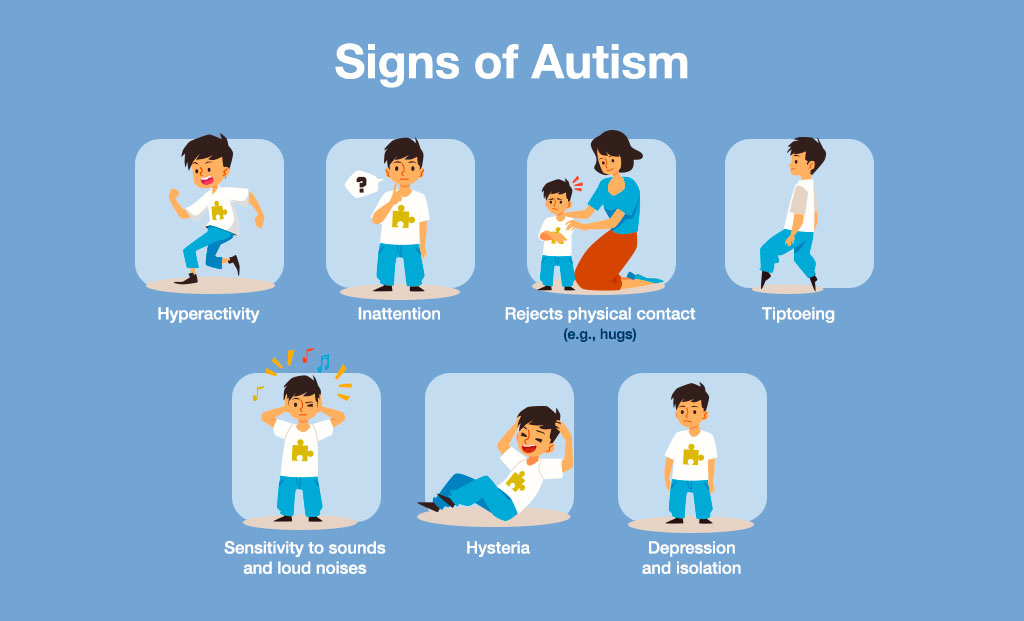Rare Diseases: Everything You Need to Know About Challenges and Advances
Rare diseases present unique and significant challenges to public health,…
Continue reading


From initial identification to actual diagnosis, autism is the focus of numerous stereotypes and misconceptions that can obscure the true experiences of those living with this disorder.
One of the biggest challenges faced by autistic patients is the difficulty in social understanding and the lack of information about this condition.
Whether in interpersonal relationships, access to the job market, forming friendships, or inclusion in school, this lack of understanding is a common barrier that often prevents them from fully and equally participating in these spaces.
In this article, we will explore what autism is, its characteristics, causes, diagnosis, and treatment for Autism Spectrum Disorder (ASD). Enjoy your reading!
Autism or Autism Spectrum Disorder (ASD) is a neurodevelopmental disorder that affects areas such as communication, social interaction, and repetitive and restrictive behaviors, with early onset that can vary among individuals and in severity, as defined in the Diagnostic and Statistical Manual of Mental Disorders (DSM-5) by the American Psychiatric Association (1) and the World Health Organization (2).
The estimated global prevalence of autism is around 65 per 10,000 individuals; however, this rate can vary according to factors such as male sex, that is one of the most well-established etiological factors for autism (3, 4); sociodemographic status, and race/ethnicity (5).
The incidence rate of autism has tripled over the last three decades. Due to the broad spectrum of its etiology, a considerable number of autistic children fail to receive appropriate behavioral and pharmacological treatment (6).
The causes of autism are diverse and not always fully explained. However, autism results from alterations in the development of complex neural networks, secondary to failures in synaptogenesis (the process of forming synapses between neurons).
There is no single cause of autism, but it is known that genetic factors, environmental factors, and epigenetics play an important role in its development (7).
ASD is a complex multifactorial condition in which various alterations in different genes act together and/or are combined with environmental factors (8), making it an unspecific condition resulting from multiple causes of non-linear factors. Several risk factors for its development have been discussed, such as:
These risk factors can contribute to the development of autism independently or synergistically, leading to a wide spectrum of characteristics observed in autistic patients. The variable quantitative influence of a broad spectrum of risk factors can result in a unique set of characteristics in each patient (6).
Autism can be divided into syndromic or complex autism: associated with morphological signs or symptoms useful in identifying specific genetic disorders (representing 20% to 40% of cases), and non-syndromic or essential autism: idiopathic ASD without associated signs or symptoms (9, 10).
Multiple autism refers to those with a positive family history of other similarly affected individuals, highlighting the heterogeneity of ASD.
Despite the recognition of nearly 800 clinically relevant or known susceptibility genes for ASD (11) characterized by numerous etiological studies, it seems that no cohesive model of causality, biomarker (12), or specific mode of transmission for autism development has been strongly identified (13).
Family and heritability studies have shown that genetic factors contribute, with estimates of up to 90% in monogenic conditions, such as tuberous sclerosis, fragile X syndrome, and Rett syndrome; but represent less than 10% of all ASD cases (14, 15).
The main genetic alterations leading to ASD include (16):
ASD presents a wide clinical variability, being conceptualized as a behavioral syndrome that can manifest with various clinical presentations in different intensities, such as dysmorphic features, intellectual disability, hyperactivity, gastrointestinal problems, sleep disturbances and epilepsy (1).
In addition to the variable clinical presentation, behavioral and psychiatric comorbidities are common in individuals with ASD and can have a substantial impact on overall health, quality of life, and long-term prognosis.
Approximately 30% of individuals with ASD require psychological and psychiatric treatments, including medication for behavioral changes such as hyperactivity, impulsivity, inattention, aggression, self-harm, mood disorders, and psychotic or tic disorders (17, 18).
The diagnosis of autism is essentially clinical and can be made between 18-24 months of age. It is around this age that characteristic symptoms can be distinguished from typical development and other developmental delays or conditions (5).
The American Academy of Pediatrics (19) recommends screening all infants and young children to identify early signs of autism at 18 months and again at 24 months of age. Evaluations or assessment scales that have been validated for clinical and research purposes are useful in establishing the diagnosis of autism.
Tests help to find the cause (in a minority of cases), and understanding the cause helps to better direct treatment.
Since there is no specific clinical test for diagnosing ASD, the diagnosis is currently based on the criteria established by the DSM-5: Diagnostic and Statistical Manual of Mental Disorders (1), which allows for identifying if the patient shows signs of delays in age-specific developmental milestones and initiating early interventions.
The DSM-5 manual allows for specifying if ASD is associated with a known medical or genetic condition or an environmental factor, associated with another neurodevelopmental, mental, or behavioral disorder; specifying the current severity for Criterion A and Criterion B: requiring very substantial support, requiring substantial support, requiring support; and specifying with or without concurrent intellectual impairment, with or without concurrent language impairment, with catatonia.
The diagnostic criteria are divided into A, B, C, D, and E:
A. Persistent deficits in social communication and social interaction across multiple contexts, as manifested (limitation in social-emotional reciprocity; limitation in non-verbal communication behaviors; limitation in developing, maintaining, and understanding relationships), currently or by previous history;
B. Restricted and repetitive patterns of behavior, interests, or activities, as manifested by at least two of the following (stereotyped or repetitive motor movements, use of objects, or speech; insistence on sameness, inflexible adherence to routines, or ritualized patterns of behavior; highly restricted, fixated interests that are abnormal in intensity or focus; hyper- or hyporeactivity to sensory input), currently or by previous history;
C. Symptoms must be present early in the developmental period (may not become fully manifest until social demands exceed limited capacities or may be masked by learned strategies later in life);
D. Symptoms cause clinically significant impairment in social, occupational, or other important areas of current functioning;
E. These disturbances are not better explained by intellectual disability (intellectual developmental disorder) or global developmental delay.
It is possible to suspect autism spectrum disorder by observing some signs that your child may display, such as:

Upon receiving an autism diagnosis, one of the most important steps is early intervention. Treatment for autism is individualized since each patient has a unique spectrum of symptoms, so there is no standard treatment.
Because autism is an extremely complex condition, it requires multidisciplinary approaches aimed at providing effective prognostic and therapeutic strategies (20).
SYNLAB offers two next-generation sequencing (NGS) panels for investigating autism spectrum disorder:
1. Autism Panel – NGS: This test analyzes 106 genes involved in autism development through NGS, including: ANK3, ANKRD11, AP1S2, ARX, ATRX, AUTS2, AVPR1A, BDNF, BRAF, CACNA1C, CASK, CDKL5, CHD7, CHD8, CNTNAP2, CNTNAP5, CREBBP, DHCR7, DLGAP2, DMD, DOCK4, DPP10, DPP6, EHMT1, FGD1, FMR1, FOLR1, FOXG1, FOXP1, FOXP2, GABRB3, GABRG1, GNA14, GRIN2B, GRPR, HOXA1, HPRT1, HUWE1, IL1RAPL1, IMMP2L, KATNAL2, KCTD13, KDM5C, KIRREL3, L1CAM, LAMC3, MBD5, MECP2, MED12, MEF2C, MET, MID1, NEGR1, NHS, NIPBL, NLGN3, NLGN4X, NRXN1, NSD1, NTNG1, OCRL, OPHN1, PAFAH1B1, PCDH19, PCDH9, PDE10A, PHF6, PIP5K1B, PNKP, PON3, PQBP1, PTCHD1, PTEN, PTPN11, RAB39B, RAI1, RBFOX1, RELN, RPL10, RPS6KA3, SATB2, SCN1A, SCN2A, SHANK2, SHANK3, SLC16A2, SLC6A4, SLC9A6, SLC9A9, SMC1A, SMG6, SNRPN, SOX5, SPAST, ST7, STK3, SYNGAP1, TCF4, TSC1, TSC2, UBE3A, VPS13B, ZEB2, ZNF507, ZNF804A y ZNHIT6.
2. Clinical Exome Focused on Intellectual Disability/Autism: This test analyzes all exons of all genes in the genome, focusing on intellectual disability and autism.

Conducting precise and up-to-date tests is essential for more accurate diagnoses and better treatment guidance. SYNLAB is here to help.
We offer diagnostic solutions with rigorous quality control to the companies, patients, and doctors we serve. We’ve been in Brazil for over 10 years, operate in 36 countries across three continents, and are the leading service provider in Europe.
Get in touch with the SYNLAB team and learn about the tests available.
1) American Psychiatric Association. Diagnostic and Statistical Manual of Mental Disorders (DSM-5), 5th ed. American Psychiatric Association: Washington, DC, USA, 2013.
2) World Health Organization. ICD-10: International Statistical Classification of Diseases and Related Health Problems: Tenth Revision, 2nd ed.;World Health Organization: Geneva, Switzerland, 2004.
3) Lord C, Elsabbagh M, Baird G, Veenstra-Vanderweele J. Autism spectrum disorder. The Lancet. 2018;392(10146):508–520.
4) Elsabbagh M. Linking risk factors and outcomes in autismo spectrum disorder: Is there evidence for resilience? BMJ. 2020;28,368:l6880. doi: 10.1136/bmj.l6880.
5) Zeidan J, Fombonne E, Scorah J, Ibrahim A, Durkin MS, Saxena S, Yusuf A, Shih A, Elsabbagh M. Global prevalence of autism: A systematic review update. Autism Research. 2022;15:778–790.
6) Nadeem MS, Al-Abbasi FA, Kazmi I, Murtaza BN, Zamzami MA, Kamal MA, Arif A, Afzal M, Anwar F. Multiple Risk Factors: A Challenge in the Management of Autism. Curr Pharm Des. 2020;26(7):743-754.
7) Ruggieri V, Arberas C. Mecanismos epigenéticos involucrados en la génesis del autismo. Medicina (B Aires). 2022;82:(Supl. I): 48-53.
8) Bourgeron T. From the genetic architecture to synaptic plasticity in autism spectrum disorder. Nat Rev Neurosci. 2015;16:551–563.
9) Cohen D, Pichard N, Tordjman S, Baumann C, Burglen L, Excoffier E, Lazar G, Mazet P, Pinquier C, Verloes A, et al. Specific genetic disorders and autism: Clinical contribution towards their identification. J. Autism Dev. Disord. 2005, 35, 103–116.
10) Miles JH, Takahashi TN, Bagby S, Sahota PK, Vaslow DF, Wang CH, Hillman RE, Farmer JE. Essential versus complex autism: Definition of fundamental prognostic subtypes. Am. J. Med. Genet. 2005,135, 171–180.
11) Butler MG, Rafi SK, Manzardo AM. High-resolution chromosome ideogram representation of currently recognized genes for Autism spectrum disorders. Int. J. Mol Sci. 2015;16:6464–6495.
12) Walsh P, Elsabbagh M, Bolton P, Singh I. In search of biomarkers for autism: Scientific, social and ethical challenges. Nat. Rev. Neurosci. 2011;2:603–612.
13) Happé F, Ronald A, Plomin R. Time to give up on a single explanation for Autism. Nat. Neurosci. 2006;9:1218–1220.
14) Silverstain I, Picker J, et al. Austism Consortium Clinical Genetics/DNA Diagnostics Collaboration. Clinical genetic testing for patients with autism spectrum disorders. Pediatrics. 2010;125:727–735.
15) Waye MMY, Cheng HY. Genetics and epigenetics of autism: A review. Psychiatry Clin. Neurosci. 2018;72:228–244.
16) Schaefer GB, Mendelsohn NJ. Genetics evaluation for the etiologic diagnosis of autism spectrum disorders. Genet Med. 2008 Jan;10(1):4-12.
17) Howes OD, Rogdaki M, Findon JL, Wichers RH, Charman T, King BH, Loth E, McAlonan GM, et al. Autism spectrum disorder: Consensus guidelines on assessment, treatment and research from the British Association for Psychopharmacology. J. Psychopharmacol. 2018, 32, 3–29.
18) Rosen TE, Mazefsky CA, Vasa RA, Lerner MD. Co-occurring psychiatric conditions in autism spectrum disorder. Int Rev. Psychiatry. 2018, 30, 40–61.
19) Hyman SL, Levy SE, Myers SM. AAP Council on Children with Disabilities, Section on Developmental and Behavioral Pediatrics. Identification, Evaluation, and Management of Children with Autism Spectrum Disorder. Pediatrics 2020;145:e20193447.
20) de Araujo CA. Autism: an ‘epidemic’ of contemporary times? J Anal Psychol. 2022. PMID: 35417594.
Rare diseases present unique and significant challenges to public health,…
Continue reading
SYNLAB, a European leader in medical diagnostics, stands out as…
Continue reading
From initial identification to actual diagnosis, autism is the focus…
Continue reading